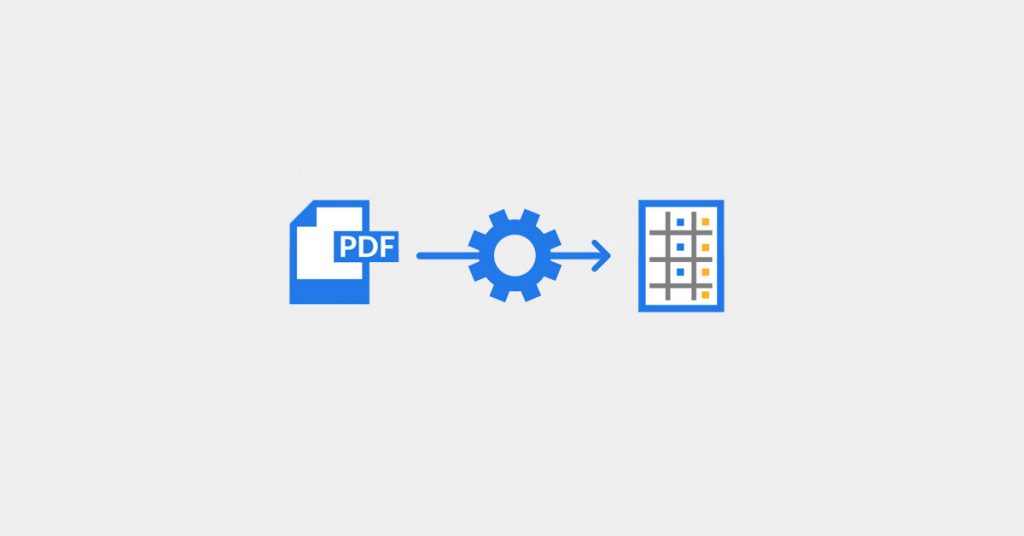Using data extraction can transform your business.
Although it is easy to get started with, it can take some time to realize what it can actually do for your business.
If you’ve ever had questions about data extraction and wanted a better understanding of it, then you’re in the right place.
In this article, you’ll learn what is data extraction, why it’s important, the different types, as well as some, use cases to take inspiration from for your own business.
Sound good? Let’s go.
What is data extraction?
So what does it mean to extract data?
I’m glad you asked. Here’s a quick data extraction definition:
Data extraction is the process of getting data from a source for further data processing, storage or analysis elsewhere. The term data collection is often used when talking about data extraction.
Data is typically analyzed and then crawled through in order to get any relevant information from the sources (such as database or document). More data processing can also be done to add metadata.
Why is data extraction important?
There are quite a few benefits to using data extraction to speed up and automate workflows, especially for small businesses like bootstrapped SaaS companies.
In fact, according to a study by McKinsey Digital, CEOs spend almost 20% of their time on work that could be automated (like analyzing operational data and reviewing status reports).
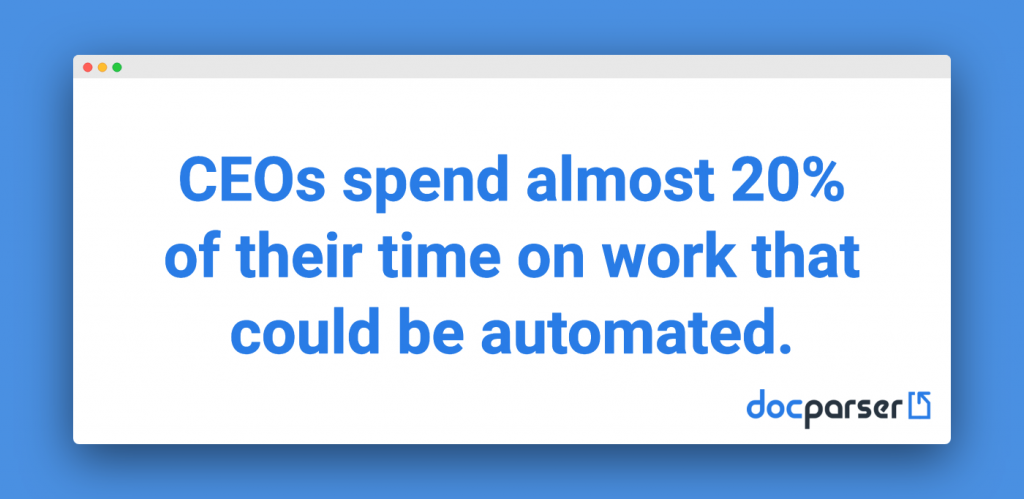
This really puts into perspective how speeding up a few tasks with data extraction can be hugely beneficial for small businesses.
Here are just five reasons you should consider using data extraction:
#1 It can improve accuracy & reduce human error
By automating data entry processes for repetitive tasks, data extraction tools can help improve the accuracy of your data inputs by reducing human errors.
If your staff is entering large amounts of data day in and day out, there is a high chance of errors and inaccuracies through human error. By automating the process, you can go some way to removing these errors and get more accurate data overall.
Not only is this great for the business (as better decisions based on more accurate data can be made), but it’s great for employees too. This leads on nicely to the next point…
#2 It can increase employee productivity
Removing the need for lots of manual data entry means your staff can spend more time on important tasks that only a human can do. Typically these types of tasks add more value to a business.
Because they are using their skills to complete more meaningful tasks (vs endless data entry) it means employees can feel more satisfied in their job, leading to an increase in productivity.
#3 It can improve visibility
Using data extraction to stay on top of data processing allows your team to get their hands on data faster. This simple process of extracting and storing data means it is more visible to everyone in your business that needs to see it.
What’s more, when employees have access to the information they need, there are no delays in waiting on the data being inputted into the system.
#4 It can save you & your business time
Time is money. And wasted time is a big issue for businesses.
Any tool that can improve processes and save time should be explored. When used correctly, data extraction tools can save your business time, giving staff time to concentrate on more important tasks.
#5 It can help reduce costs
And finally, by automating long and repetitive tasks where possible, businesses can save money in both the short and long term.
In the day to day running of your businesses and as it grows, you don’t need to worry about scaling and investing in a large team to handle your data needs.
So, How Is Data Extracted?
Now you know what data extraction is and why you should be using it in your business, how exactly does it work?
When it comes to data extractions, there two main types: structured and unstructured.

Here are what each type of data means:
- Structured data – when the process is typically performed within the source system. It’s common to utilize full or incremental extraction methods here.
- Unstructured data – when you work with unstructured data, a large part of the job task preparing the data. Things like removing whitespace and symbols, removing duplicate results, and deciding how to handle any missing values.
Data Extraction Challenges
Usually, you extract data in order to move it to another system or for data analysis (or both).
If you intend to analyze it, you are likely performing ETL (extract, transform, load) so that you can pull data from multiple sources and run analysis on it together.
The challenge is ensuring that you can join the data from one source with the data from other sources so that they play well together. This can require a lot of planning, especially if you are bringing together data from structured and unstructured sources.
Another challenge with extracting data is security.
Often some of your data contain sensitive information. It may, for example, contain PII (personally identifiable information), or other information that is highly regulated.
You may need to remove this sensitive information as a part of the extraction, and you will also need to move all of your data securely. For example, you may want to encrypt the data in transit as a security measure.
Sidenote: Types of Data Extraction Tools
When it comes to the actual tools, there are a few different types:
- Batch processing tools: these extract your data in batches, usually outside of business hours to minimize any downtime.
- Open source tools: these are a good fit for budget limited applications, providing a supporting infrastructure (and knowledge) is in place.
- Cloud-based tools: these are the latest generation tools and generally will focus on the real-time extraction of data as part of an ETL (extract, transform, load) process.
Uses Cases & Examples of Data Extraction in Action
Whether you run an IT firm, real estate services or any other type of business that handles data and documents, here are a few examples of data extraction being used in a business.
How JuicedTech Leverages Docparser With QuickBase
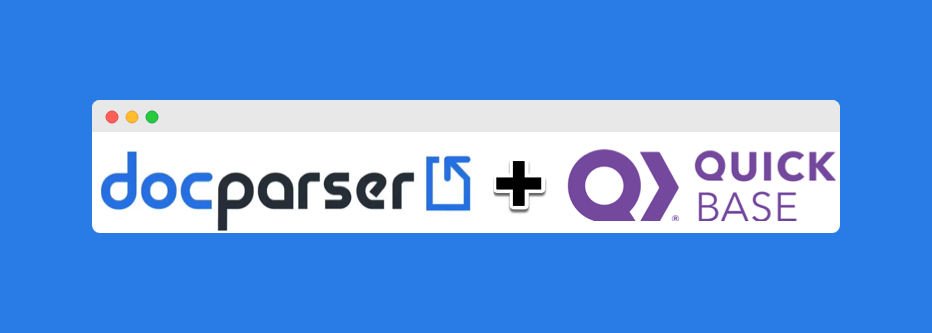
PDF and scanned documents are widely used to exchange information such as contracts, invoices, price lists, sales. JuicedTech uses workflows to enhance their customer’s experience by:
- Parse a PDF document from an email attachment,
- Map keywords from a PDF document to fields within a Quick Base table
- Insert records in a table with keyword values from the attached PDFs
- Insert PDF documents as file attachments to tables
How Realty Trust Services, LLC Saved 50 Hours of Work With Docparser (and Zapier)
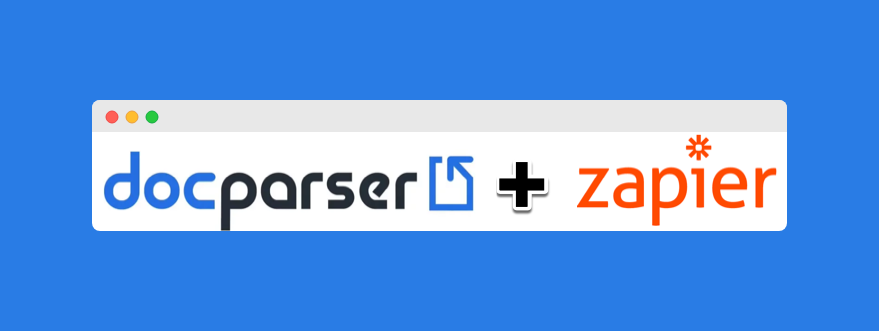
Realty Trust Services, LLC is a small real estate brokerage firm in northeastern Ohio (Cleveland Metropolitan Area).
What’s important to know though is that they save 50 hours every month by automating business processes like:
- Scanning bills
- Uploading batch files
- Matching customer data
Learn more about Realty Trust Services
Rental Application & Agreement Parsing for Property Managers
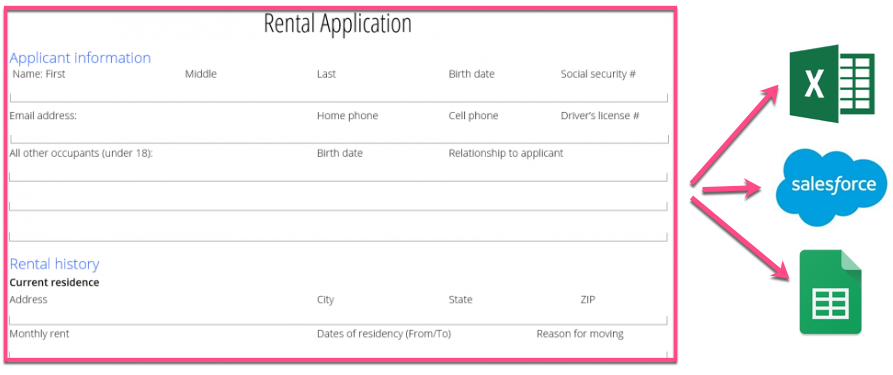
Processing rental application forms & agreements can be a time-consuming process for property managers.
But by using data extraction, you can pull out the data you need and download it in Excel, CSV, XML, or JSON format, or use Salesforce and Google Sheets integrations.
Learn more about Rental Agreements
The above examples are not the only things you can do with data extraction. You can also:
- Convert Paper Documents To Database Records
- Automate Accounts Payable
- Read Barcodes & QR-codes From PDFs, Scanned Documents And Images
- Turn PDF files into structured XML data
- Build Your Own Automated Purchase Order System With Docparser
And much more!
Once you start exploring the possibilities of data extraction, you’ll be sure to find a use for it within your own business.
Summary
Data extraction goes some way to giving you peace of mind (and more control) over your business, without having to hire more employees to handle all your data.
So if you’re looking for a way to increase productivity, stay ahead of competitors and increase your accuracy, data extraction may be the thing you are looking for.
Want to get started with data extraction? Create a free account today!

